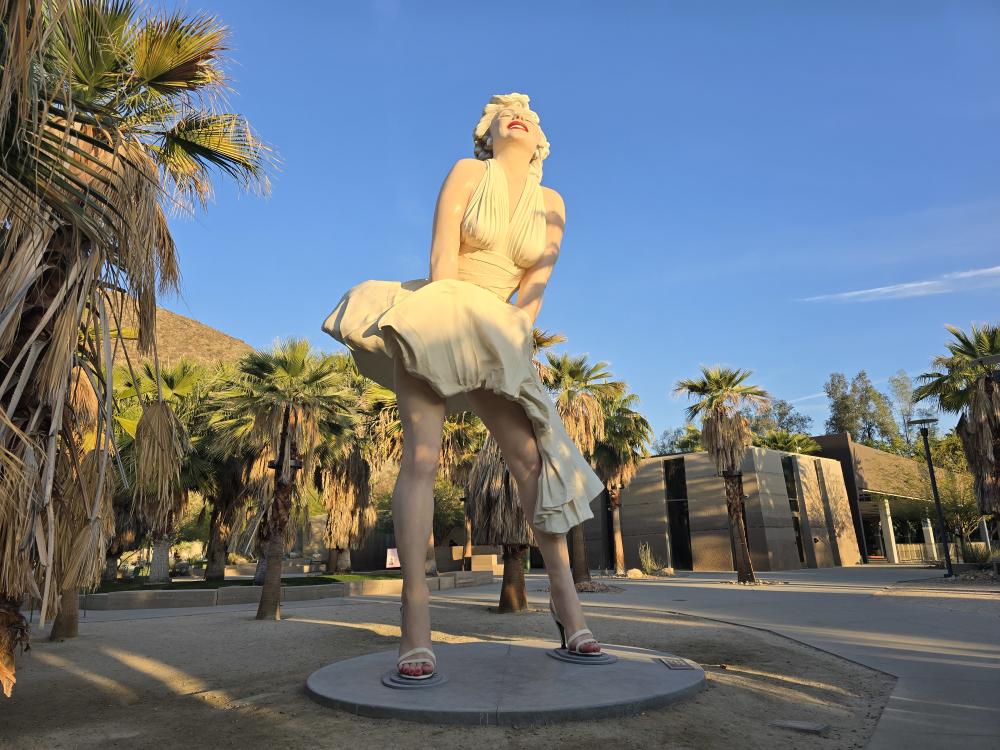Bruno Bernard: Bernard of Hollywood
It began with Bruno Bernard. He was professionally known as Bernard of Hollywood and was one of the most sought-after glamour photographers of Hollywood’s Golden Era.
Born in Berlin in 1912, Bernard grew up in an orphanage after his family fell into poverty. Encouraged to pursue education, he attended Kiel University and earned a doctorate in criminal law at age 26. Though trained in law, Bernard was fascinated by human expression, stage lighting, and the psychology of performance. This interest later shaped his photographic philosophy, which he called “posed candid photography.”
In 1937, Bernard escaped Nazi Germany and immigrated to the United States. After continuing postgraduate studies at UC Berkeley, he followed his creative instincts to Los Angeles and joined Max Reinhardt’s Actors’ Workshop as a directorial apprentice. When he tried to break into the motion picture industry as a cameraman or assistant director, he was blocked from entry into the unions. Undeterred, Bernard opened his own photography studio, first photographing the children of producers. To set himself apart, he registered the name “Bernard of Hollywood” in 1939.
He built his first darkroom in the basement of his Hollywood apartment in 1941 and soon gained a reputation for capturing the emotional depth behind beauty. Within a year, he was photographing up-and-coming actors and, later, the era's most famous stars. Bernard opened studios in Hollywood, Palm Springs, and Laguna Beach. According to the Desert Sun, he opened the Palm Springs Bernard of Hollywood Studio in January of 1944 at 6 La Plaza. He then expanded his studio and added No. 12 at La Plaza that November, connecting the two spaces.
His first major star was Tyrone Power, whom he photographed in Palm Springs in 1943. Power praised his work and introduced him to the Palm Springs Racquet Club, the desert playground for Hollywood’s elite. Club owner Charlie Farrell hired Bernard as the official photographer for the resort. Soon, Bernard’s lens captured legends such as Clark Gable, Spencer Tracy, William Powell, Cary Grant, Paulette Goddard, Gene Tierney, and many more. His portraits appeared on the covers of Life, Redbook, and other national magazines.
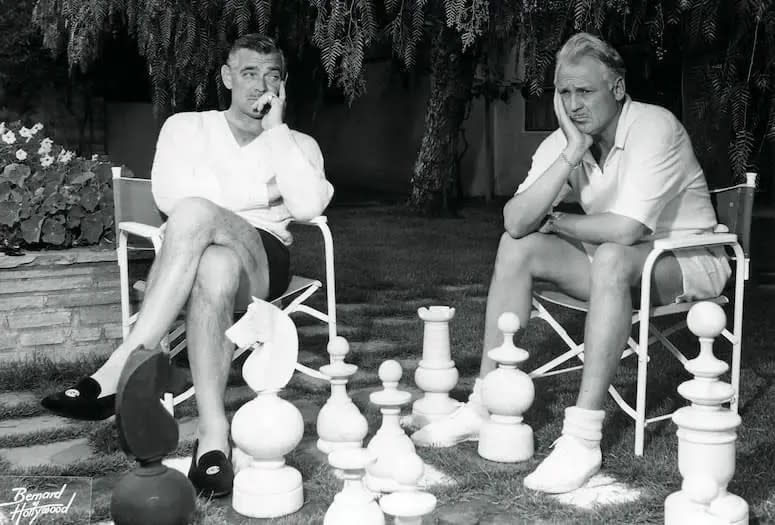
Clark Gable and Charlie Farrell play lawn chess at The Racquet Club.
Charlie was a famous actor best known for his onscreen romances with actress Janet Gaynor in the 1920s and 1930s, in films such as "7th Heaven", "Street Angel", and "Lucky Star." Later in life, he starred on TV in the 1950s sitcom "My Little Margie." He was the Mayor of Palm Springs from 1947 to 1955.
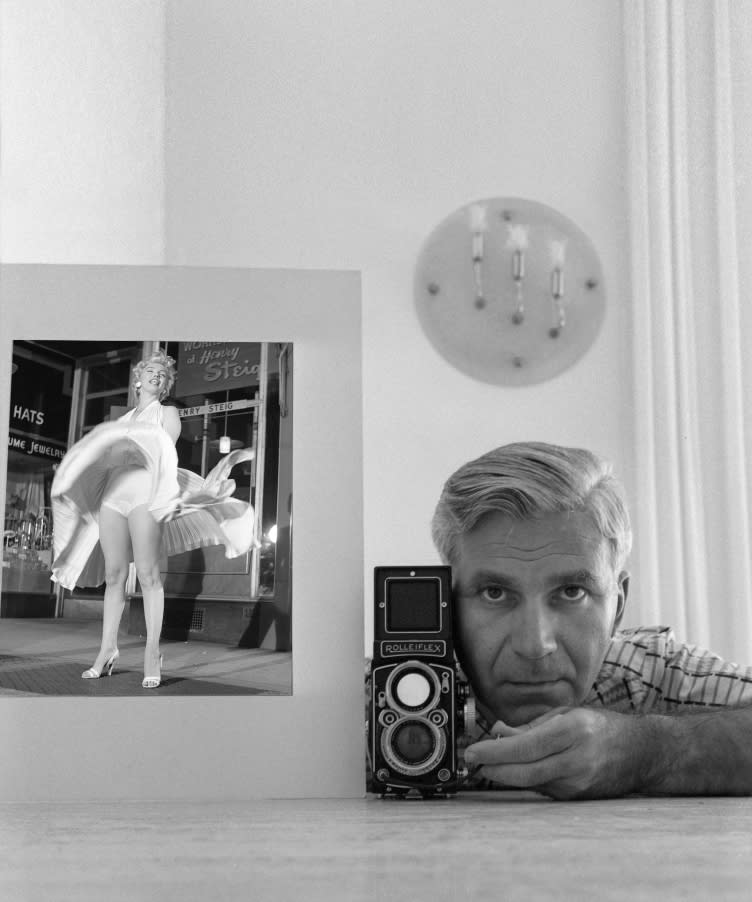
Meeting Marilyn Monroe
Bernard’s life changed forever in 1946, when he met a young woman named Norma Jeane Dougherty as he left his dentist’s office in Hollywood (the dentist was reportedly Dr. Philip Villard). They began to talk, and Bernard told her he was a photographer who captured “faces and light” and gave her his business card. He was polite and professional.
The next day, Norma Jeane arrived at his Hollywood studio on Sunset Boulevard for a photo session. Bernard photographed her in his signature “posed candid” style, playful yet natural, radiant yet authentic. This is an image taken at that photoshoot.

He sent the images to Ben Lyon, head of casting at Twentieth Century Fox. Lyon was so impressed that he arranged a screen test and later suggested a new name for her: Marilyn Monroe.
Marilyn signed a one-year contract with Fox for $125 a week, though she appeared in no films during that period. After Fox declined to renew her contract, she briefly signed with Columbia Pictures in 1948, appearing in Ladies of the Chorus. Again, her contract was not renewed, but her career was far from over.
Palm Springs and the Racquet Club
With her career in a slump, Bernard invited Marilyn to Palm Springs for a photo shoot at the Racquet Club in 1947, knowing producers and directors frequented it. The Racquet Club, co-founded by actors Charlie Farrell and Ralph Bellamy, was a private retreat where Hollywood stars could relax away from the spotlight. Because of his trusted relationships, Bernard was the only photographer allowed to shoot at the club.
According to Bernard’s daughter, Susan Bernard, Marilyn met Johnny Hyde, vice president of the William Morris Agency, during that first shoot. Hyde quickly fell in love with her and became her agent, securing her first major role as Angela in John Huston’s The Asphalt Jungle (1950). Within months, Hyde negotiated a 7-year contract with 20th Century Fox. Tragically, he died of a heart attack in December 1950, but by then, Marilyn’s star had begun to rise.
This is an image of Marilyn taken at that photoshoot at the Racquet Club.
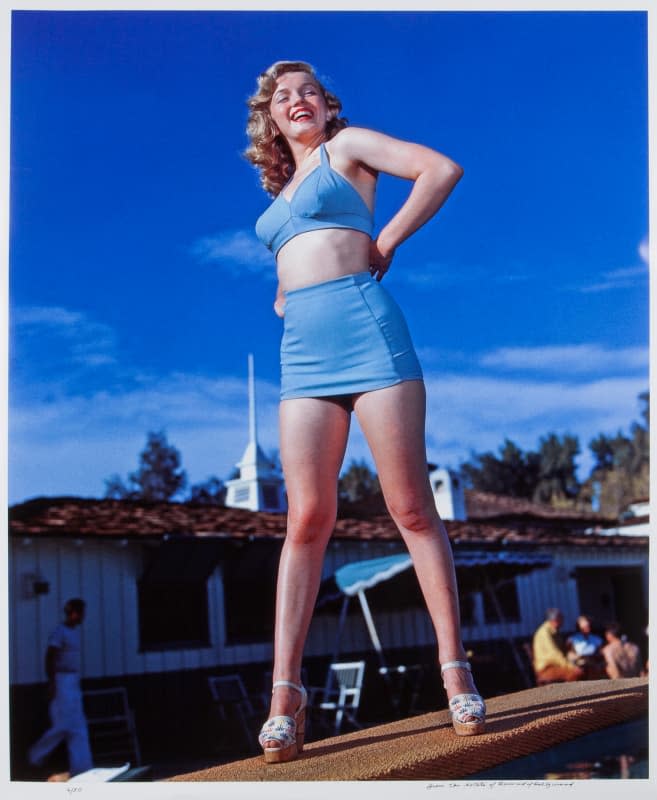
Bruno later brought Marilyn to the Raquet Club on assignment for a New Year's Eve party. This is Marilyn having dinner with Johnny Hyde.

Gentlemen Prefer Blondes
Howard Hawks, the Director of Gentlemen Prefer Blonds, had been frequenting the Racquet Club since 1939. In 1943, he stayed at the Desert Inn while he worked on the script for a new picture entitled Battle Cry. Hawks was seen at a Racquet Club party in 1947 alongside Tony Martin, Edgar Bergen, Randolph Scott, Harold Lloyd, and Spencer Tracy. Sam Goldwyn hosted him for dinner with Orson Welles.
He built a five-bedroom home in the Las Palmas neighborhood in 1949 and became a seasonal resident. That same year, he met Marilyn through Johnny and realized she had something in common with the role she played in The Asphalt Jungle. He then cast her in a sporting role in Monkey Business (1952). Hawks became convinced that Fox chief Darryl Zanuck was misreading Marilyn's appeal, casting her too often in the wrong kinds of films. He urged him to cast her in Gentlemen Prefer Blondes, which he did. After that, Marilyn became the biggest star in Hollywood.
Fact: Hawks lived at 1455 N. Vine Avenue in Palm Springs until his death in 1977. It is the same as 501 Stevens Road, which is a different entrance. Darryl Zanuck lived at 346 E. Tamarisk Road. He also passed away in Palm Springs in 1977.
Howard Hawks (seated) directs Marilyn and Cary Grant in Monkey Business
The Famous Photograph
In 1954, Marilyn was married to Joe DiMaggio and was filming The Seven Year Itch. The Director, Billy Wilder, was shooting the movie's sexiest scene on a New York evening in October. Bruno was there on assignment to photograph Marilyn for Redbook magazine and was waiting for a chance to photograph the actress. Wilder wasn't about to stop the shoot for a photographer from Redbook, but Marilyn wasn't going to have it. "We have to stop for him," she said. Marilyn was standing over an air vent for the subway system below Lexington Avenue. She was wearing a full, white dress with a low-cut V-neck. Suddenly, a stream of wind from the subway blew her dress above her hips. But Marilyn didn't move. She seemed to revel in it. Bernard got his camera and photographed Marilyn.

He captured the image that would become one of the most famous photographs of the 20th century, a symbol of glamour, confidence, and timeless allure.
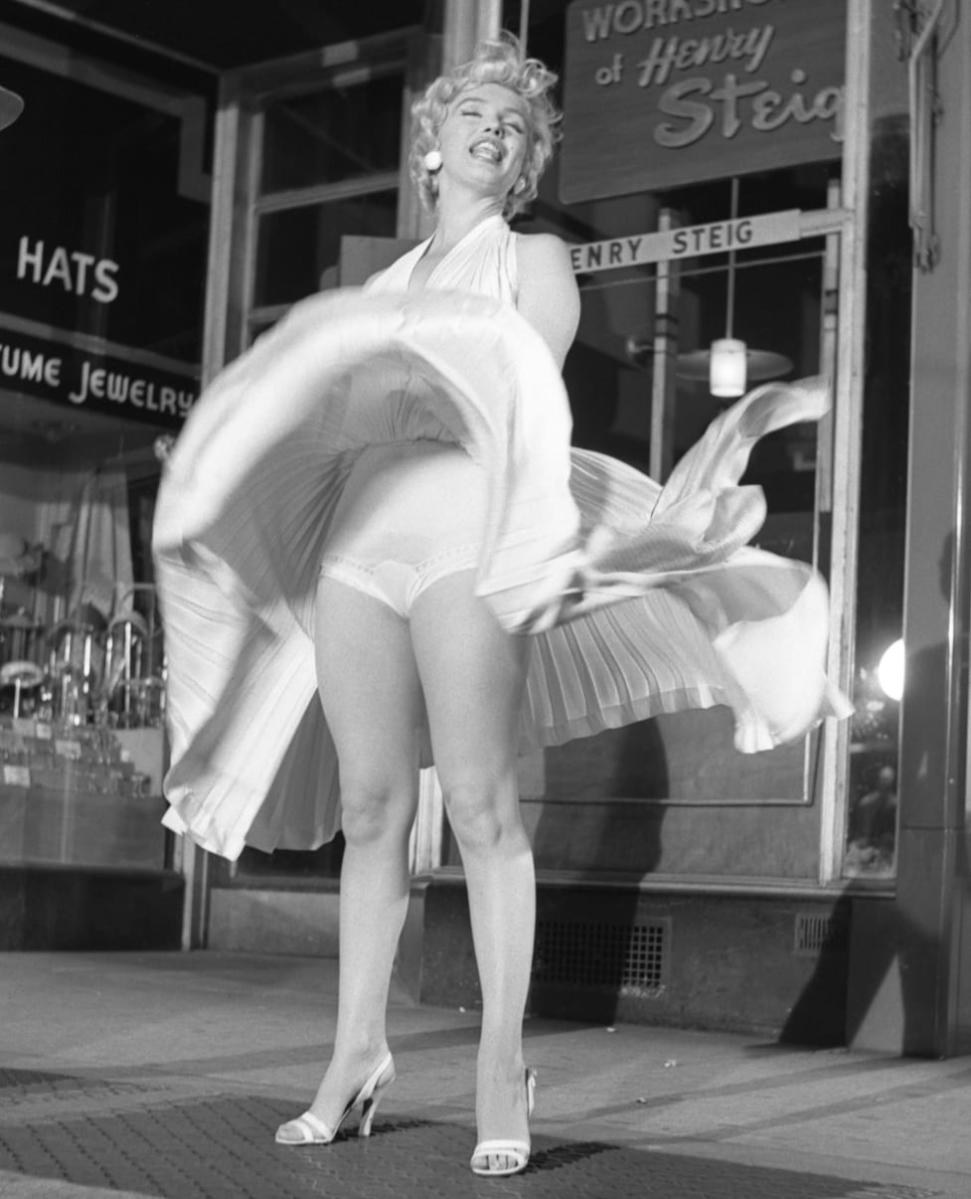
In 1954, Marilyn was in Palm Springs dining at Don the Beachcomber with New York Photographer Milton Greene during the Christmas holiday. They later went to a party at the Racquet Club. He was an American fashion and celebrity photographer and film and television producer, best known for his later photo shoots with Marilyn Monroe. He first shot her for a Look magazine layout in 1953. The two struck up a friendship, and when Monroe took up acting classes with Lee Strasberg in New York City, she stayed with Greene and his family.
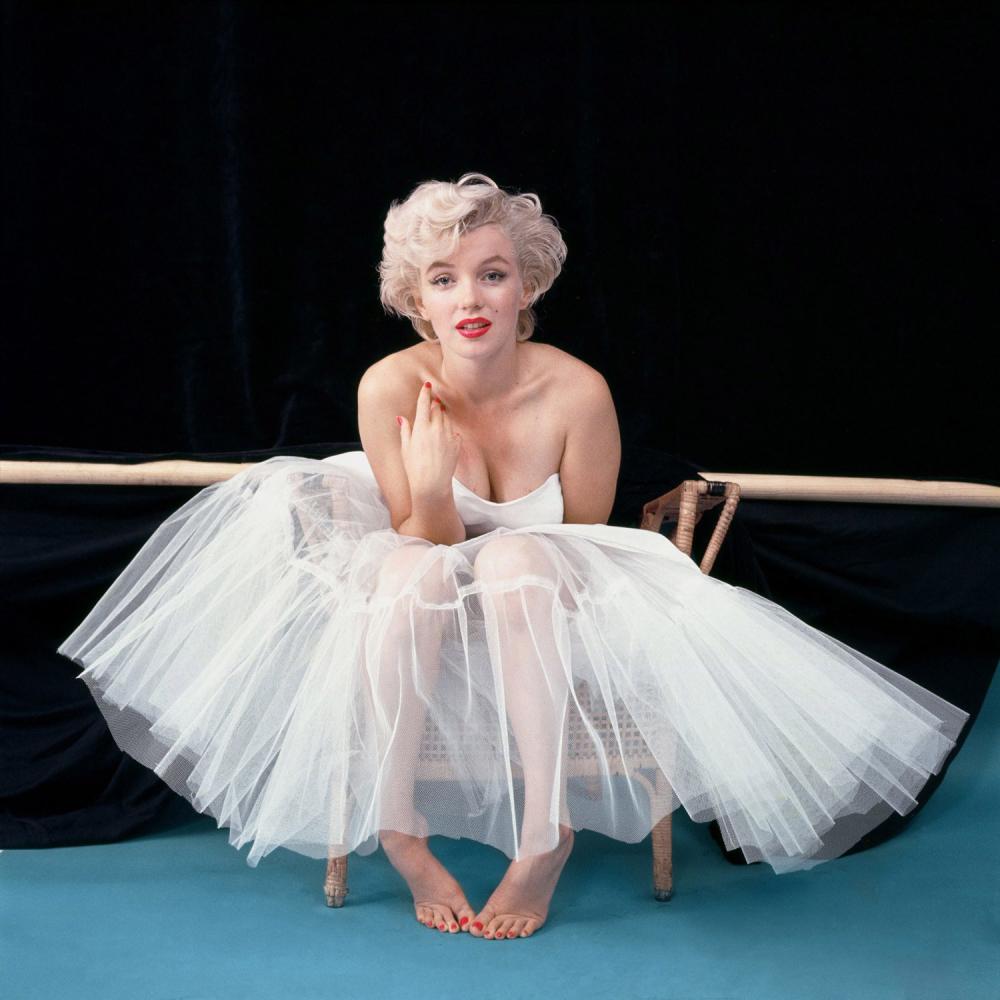
Later Years and Legacy
In 1959, Bernard moved to Germany as a photojournalist, covering the Eichmann trial and later working across Europe. He relocated to Spain in 1969, then returned to California in 1979, dividing his time between Los Angeles and Palm Springs. His Palm Springs home was at 997 N. Tuxedo Circle, which he owned until his death.
In 1984, Bernard became the first still photographer honored by the Academy of Motion Picture Arts and Sciences, which exhibited 150 of his portraits of stars such as Clark Gable, Marilyn Monroe, Gregory Peck, Marlene Dietrich, and Elvis Presley.
Bruno Bernard passed away on June 5, 1987, in Los Angeles after a long battle with cancer. According to his daughter, Susan, he wished for his ashes to be scattered over the desert he loved.
Susan Bernard went on to preserve his legacy through books and exhibitions, including Marilyn: Intimate Exposures (2011). His grandson, Joshua John Miller, now serves as President of Bernard of Hollywood, overseeing the archive that continues to celebrate his pioneering vision.
Read Joshua's story about his grandfather: How Bruno Bernard Helped Launch Marilyn Monroe.
See the Forever Marilyn Statue in the Downtown Park
